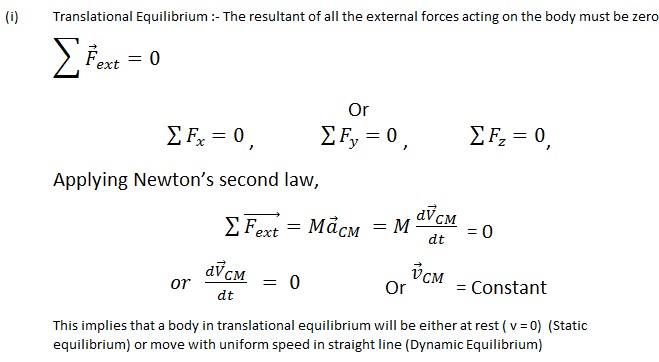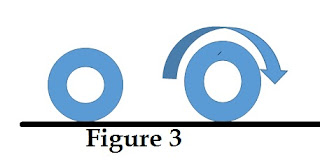Dear Friends
Thanks for your kind support. Today Our blog has successfully completed 10,000 + Visits. And it is only possible because of your kind support. Please keep on supporting Us.
Thanks and Regards
Physics Heaven Blog Team
अंतरिक्ष में भारत की ऐतिहासिक छलांग, देश का पहला एस्ट्रोसैट उपग्रह PSLV-C30 लॉन्च
By Aajtak, 28 Sep 2015 10:10 AM (28 Sep)
भारतीय अंतरिक्ष अनुसंधान संगठन (इसरो) ने श्रीहरिकाेटा से भारत के
एस्ट्रोसैट सहित सात उपग्रहों को ले जाने वाले रॉकेट का सफल प्रक्षेपण कर
दिया है. इस एस्ट्रोसैट की मदद से ब्रह्मांड को समझने में मदद मिलेगी.
यह रॉकेट अपने साथ 1,513 किलोग्राम वजनी 180 करोड़ रुपये की लागत वाले
भारतीय एस्ट्रोसैट उपग्रह के अलावा अमेरिका के चार और इंडोनेशिया तथा कनाडा
के एक-एक उपग्रहों को ले गया. एस्ट्रोसैट को पृथ्वी से 650 किलोमीटर की
ऊंचाई पर कक्षा में स्थापित किया जाएगा.
शनिवार सुबह आठ बजे उल्टी गिनती शुरू हुई थी
देश का पहला बहु-तरंगदैर्ध्य वाला अंतरिक्ष निगरानी उपग्रह 'एस्ट्रोसैट' भी
शामिल है, जो ब्रह्मांड के बारे में अहम जानकारियां प्रदान करेगा.
छह विदेशी उपग्रहों के सफल प्रक्षेपण के साथ ही भारत अंतरिक्ष अनुसंधान की
दिशा में 50 वर्ष पूरा कर लिया. भारत अब तक शुल्क लेकर 45 विदेशी उपग्रहों
का सफलतापूर्वक प्रक्षेपण कर चुका है.
पीएसएलवी के प्रक्षेपण के लिए शनिवार की सुबह आठ बजे उल्टी गिनती शुरू हुई
थी. सात उपग्रहों को ले जाने वाला यह रॉकेट सोमवार को आंध्र प्रदेश के
श्रीहरिकोटा प्रक्षेपण स्थल से सुबह 10 बजे उड़ान भरा. इससे पहले इसरो ने 2010 में एक साथ 10
उपग्रहों का प्रक्षेपण किया था, जिसमें भारत के दो काटरेसैट-2ए उपग्रह भी
शामिल थे.
सातों उपग्रहों का कुल वजन 1,631 किलोग्राम
सात उपग्रहों को ले जाने वाला यह चार स्तरीय पीएसएलवी-एक्सएल रॉकेट 44.4
मीटर लंबा और 320 टन वजनी है. उल्टी गिनती के दौरान ईंधन भरे जाने के अलावा
सारे सिस्टम की जांच और पुनर्जाच की जाएगी. रॉकेट के साथ लांच किए जाने
वाले सातों उपग्रहों का कुल वजन 1,631 किलोग्राम है.
उड़ान भरने के 22 मिनट बाद रॉकेट धरती की सतह से 650 किलोमीटर की ऊंचाई पर
एस्ट्रोसैट को उसकी कक्षा में स्थापित कर देगा. इसके कुछ ही मिनट के
अंतराल पर शेष छह उपग्रह भी अपनी-अपनी कक्षा में स्थापित कर दिए जाएंगे. इस
अभियान में कुल 25 मिनट का समय लगेगा.
इनपुट: IANS
(28 Sep)
भारतीय अंतरिक्ष अनुसंधान संगठन (इसरो) ने श्रीहरिकाेटा से भारत के
एस्ट्रोसैट सहित सात उपग्रहों को ले जाने वाले रॉकेट का सफल प्रक्षेपण कर
दिया है. इस एस्ट्रोसैट की मदद से ब्रह्मांड को समझने में मदद मिलेगी.
यह रॉकेट अपने साथ 1,513 किलोग्राम वजनी 180 करोड़ रुपये की लागत वाले
भारतीय एस्ट्रोसैट उपग्रह के अलावा अमेरिका के चार और इंडोनेशिया तथा कनाडा
के एक-एक उपग्रहों को ले गया. एस्ट्रोसैट को पृथ्वी से 650 किलोमीटर की
ऊंचाई पर कक्षा में स्थापित किया जाएगा.
शनिवार सुबह आठ बजे उल्टी गिनती शुरू हुई थी
देश का पहला बहु-तरंगदैर्ध्य वाला अंतरिक्ष निगरानी उपग्रह 'एस्ट्रोसैट' भी
शामिल है, जो ब्रह्मांड के बारे में अहम जानकारियां प्रदान करेगा.
छह विदेशी उपग्रहों के सफल प्रक्षेपण के साथ ही भारत अंतरिक्ष अनुसंधान की
दिशा में 50 वर्ष पूरा कर लिया. भारत अब तक शुल्क लेकर 45 विदेशी उपग्रहों
का सफलतापूर्वक प्रक्षेपण कर चुका है.
पीएसएलवी के प्रक्षेपण के लिए शनिवार की सुबह आठ बजे उल्टी गिनती शुरू हुई
थी. सात उपग्रहों को ले जाने वाला यह रॉकेट सोमवार को आंध्र प्रदेश के
श्रीहरिकोटा प्रक्षेपण स्थल से सुबह 10 बजे उड़ान भरा. इससे पहले इसरो ने 2010 में एक साथ 10
उपग्रहों का प्रक्षेपण किया था, जिसमें भारत के दो काटरेसैट-2ए उपग्रह भी
शामिल थे.
सातों उपग्रहों का कुल वजन 1,631 किलोग्राम
सात उपग्रहों को ले जाने वाला यह चार स्तरीय पीएसएलवी-एक्सएल रॉकेट 44.4
मीटर लंबा और 320 टन वजनी है. उल्टी गिनती के दौरान ईंधन भरे जाने के अलावा
सारे सिस्टम की जांच और पुनर्जाच की जाएगी. रॉकेट के साथ लांच किए जाने
वाले सातों उपग्रहों का कुल वजन 1,631 किलोग्राम है.
उड़ान भरने के 22 मिनट बाद रॉकेट धरती की सतह से 650 किलोमीटर की ऊंचाई पर
एस्ट्रोसैट को उसकी कक्षा में स्थापित कर देगा. इसके कुछ ही मिनट के
अंतराल पर शेष छह उपग्रह भी अपनी-अपनी कक्षा में स्थापित कर दिए जाएंगे. इस
अभियान में कुल 25 मिनट का समय लगेगा.
इनपुट: IANS


























